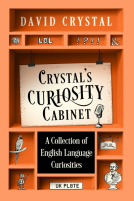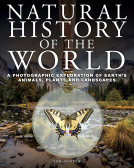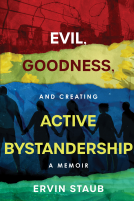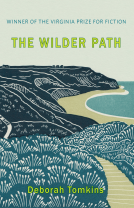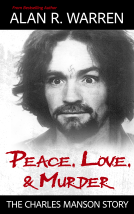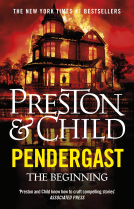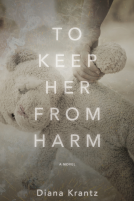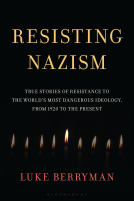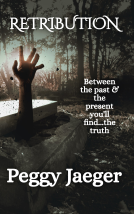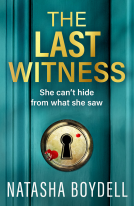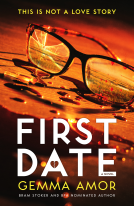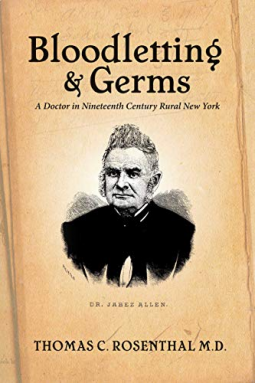
Bloodletting and Germs
A Doctor in Nineteenth Century Rural New York
by Thomas Rosenthal
This title was previously available on NetGalley and is now archived.
Send NetGalley books directly to your Kindle or Kindle app
1
To read on a Kindle or Kindle app, please add kindle@netgalley.com as an approved email address to receive files in your Amazon account. Click here for step-by-step instructions.
2
Also find your Kindle email address within your Amazon account, and enter it here.
Pub Date 20 Aug 2020 | Archive Date 27 Mar 2021
Talking about this book? Use #BloodlettingandGerms #NetGalley. More hashtag tips!
Description
A village doctor and medicine’s enlightenment.
In 1799 George Washington was bled for a sore throat. His friend, Dr. Benjamin Rush, claimed aggressive bleeding saved many patients from certain death in the 1793 Philadelphia yellow fever pandemic. Yet, a century earlier Antonie van Leeuwenhoek had written the Royal Society about microscopic ‘animalcules’ in everything from lake water to the crud between his toes. Finally scores of articles about bacteria began to appear in medical journals during the second quarter of the 1800s. It would be 1878 before germ theory became the main topic of an AMA meeting held in Buffalo, NY. Why did it take so long; and how did nineteenth century village doctors deal with pandemics of cholera, smallpox and typhoid at a time when anesthesia, antisepsis, the Civil War, and germs were transforming basic medicine theory?
The 1885 obituary for village doctor Jabez Allen MD described Dr. Allen as an “old resident and prominent physician of our village” with a large practice “seldom exceeded by a country physician.” He “possessed in a very marked degree the confidence of his numerous patients. His devotion to the welfare of those under his care could scarcely have been surpassed and his generosity in other matters was well known to all his friends.” Dr. Allen “was highly respected by his medical brethren in both city and country” yet remained devoted to his adopted East Aurora, NY.
Bloodletting and Germs is a historical novel written as Dr. Allen’s memoir. Citing over 400 sources, it is true to the events of Dr. Allen’s life and to the medical enlightenment of the nineteenth century. Married to an abolitionist wife, his story covers the fugitive slave act, Confederates soldiers dying in Northern prison camps, Union soldiers returning from Civil War battles, and the emerging commerce of upstate New York. Dr. Allen deals with the contagions of his day, including cholera sapping life from the daughter of President Millard Fillmore. Allen is elected President of the Erie County Medical Society and participates in the 1878 AMA meeting where organized medicine confronts the scientific foundation for germs.
Dr. Allen teaches us about managing the unknown as a small-town hero. His doctoring, and his life, put humanity’s face on a period of profound scientific and social transformation.
Advance Praise
Bloodletting and Germs provides a terrific “inside view” of what it was like to be a caring physician, trying to practice scientifically-based medicine, working hard to read the literature, listen to experts, keep up with the latest developments. Against a backdrop of multiple competing medical theories and con games (homeopathy, snake oil…), watching the slowly emerging awareness of things like germ theory was really fun. It made me sympathetic to how hard it must have been to learn to think about patterns of illness as suggesting diagnoses, mechanisms such as infectious disease, epidemiology as a clue to mechanism, etc. I was struck by the persistence of the miasma and humoral theories. Along these lines, I pulled out the old home medical guide we have from 1888 (attached) and was intrigued that it’s opening chapter focused on the fundamental importance of Malaria as a cause of many illnesses, and therefore of locating one’s house away from the miasmas that cause it – including detailed advice to have hedges with low hanging foliage because it absorbs the malaria, and of locating bedrooms on the second floor because malaria collects near the ground.
Available Editions
| ISBN | 9781098315399 |
| PRICE | US$5.99 (USD) |
Links
Average rating from 13 members
Featured Reviews
Excellent history of medicine in a compelling story
I loved this book. Although it is a semi-fictionalized memoir of a doctor’s life in the 19th century, it is really about the history of medicine. Author Dr. Thomas Rosenthal made the characters come alive on the page, creating a great, well-paced story. He made me care about the characters and he communicated the hardships of life in general and medicine specifically in the 1800s. I strongly recommend this book for anyone interested in the history of medicine. Thank you to NetGalley and BooksGoSocial for the advance reader copy.
I didn’t realise Greco-Roman Physician, Galen’s (129 CE – 216 CE) theory of humorism was still a central tenet in Western Medicine as late as the 19th Century, but it was. This ancient theory states there are four humors – black bile, yellow bile, blood and phlegm. The trick for physicians is to keep these four in balance. Any disturbance in the balance of these humors results in organs manufacturing by-products that overtax the liver and result in physical and emotional disturbances.
Bloodletting and Germs, A Doctor in Nineteenth Century Rural New York - by Thomas C. Rosenthal M.D. is a fascinating story centred around the life of Dr Jabez Allen, a nineteenth century physician who practiced in a small town called Aurora, not far from Lake Erie in rural New York from 1834 to 1884. We see how Dr Allen establishes himself as a physician in this quaint little town and how he starts up his medical practice and apothecary. Dr Allen’s shop window displays the noble motto of No cure, No pay. It makes you wonder how he put food on the table doesn’t it? But he did. But his slogan says something about this man.
The author takes us through the life of this remarkable man, we see how he meets the love of his life (Millicent), and the trials and tribulations they experience raising a family. We learn about some of the difficulties involved with practising medicine in those days, such as competing with snake oil salesman and other quacks. There was also the influence of ‘the will of God’ types – in some ways it makes one wonder how medicine and evidence-based science progressed at all during these times. The hurdles were significant.
Okay, the story of Dr Allen was interesting enough and would make a worthy story on its own. But what really fascinated me about this book was the integration of science and medicine and how these fields evolved during this period. This was truly a phase of significant transition from ancient practices and beliefs to true evidence based medical practice. The prevailing theory of humorism as described above, meant physicians like Dr Allen often relied on practices of bloodletting and purging. They bled patients, either by venesection or with leeches for many, if not most, conditions (anywhere between 30-120mls at a time). Doctors also used purging – getting the bowels going. The logic being it would get the bile moving. The various plants, herbs and natural remedies they used assisted in balancing the humors of the body.
Interestingly, Opiates were used quite freely. These were often mixed with the likes of brandy and given throughout treatment, to provide comfort to the poor, hapless patients of the day. Personally, I think opium laced brandy would provide comfort to most of us during any rough experience.
The nineteenth century was a fascinating period, not only because of the outbreaks of terrible contagious diseases such as Smallpox, Diphtheria, TB, Typhoid and many others – but also because of massive changes in society in America at the time due to industrialisation, Civil War and the end of Slavery.
The major discovery of ‘animalcules’ detected under the microscope was a significant breakthrough. Animalcules are microscopically visible “Germs” such as bacteria, fungi and other organisms. This initiated a major change on the way the profession tried to understand infectious diseases. This isn’t straight forward, for example, it is all very well to see a ‘germ’ in a sample such as pustule fluid – but that doesn’t necessarily mean it causes that disease. It may very well be normal flora. Also, what about fluid from pustules of viral infections – such as Smallpox? These couldn’t be seen by a light microscope. It was such hard work to prove bacteria and eventually viruses caused infectious disease back in the day. One can only admire the persistence, intelligence, creativity and total dedication of scientists and medical practitioners of the time.
There is a particularly interesting section on mental illness and the methods used to diagnose, admit and treat such patients in the mid to late nineteenth century. This chapter is titled “Comforting the Mind, 1850 to 1884”. Understanding mental health proved to be an exciting but challenging emerging field, this in an era of superstition and religious zealotry.
We could easily laugh at some of the ‘cures’ used in these times. But it is because of the dedication and persistence of these giants that we now benefit from our understanding of pathology, and medicine. It has been an iterative process and we continue to learn. I wonder if a book like this will be written in two hundred years, looking back on our current antiquated understanding of health and medicine. It’s so exciting thinking about this.
Dr Allen was in the thick of this ‘age of discovery’ and as a physician on the ground – the development of these new ways of diagnosing and treating disease had a visceral, ‘in his face’ impact his patients, his community and himself. Heady days indeed. Some of the situations described in this book where Dr Allen is treating patients clearly dying of terrible diseases was quite sobering.
At the end of the book there are several photos of Dr Allen, his wife Millicent and their practice. It was so nice to stare at these pictures at the end of the book and it enriched my experience even further. The author brings this era and everyday life in rural New York to life; it is so well written.
The addition of the scientific advancement and medicine make this book a stellar read. a classic.
I loved it.
5 Stars
This was a superbly written and astounding book! I learned quite a bit from it.
Bloodletting and Germs is filled with loads of information - definitions, fantastic resources in the back of the book as well as some great pictures of Dr. Jabez Allen and his wife Millicent S. Johnson. I highly recommend this book for anyone who wants to educate themselves on history of medicine.
Thank you Netgalley, BooksGoSocial and Thomas C. Rosenthal M.D. for the eARC. All opinions are my own.
This cleverly captures history, science and medicine in the guise of a work of fiction. Completely accessible, this book is presented as a memoir and does an amazing job of sealing in lots of facts which might otherwise be skimmed over. The author builds the characters really well and paints the context so clearly that you will feel like you are there. A great book which you can tell was a work of almost passion for the author.
Educational, fascinating well written and hard to put down. History, science and medicine woven together in a way you’ll be captivated for days to come.
 Heather R, Reviewer
Heather R, Reviewer
My thanks to the author and publisher for a review copy of this book, which was inspired by the author’s visit to the East Aurora historical museum, whose one room display included artefacts belonging to a Dr Jabez Allen. The book is his fictional autobiography.
At the start it contains an extremely useful glossary of antiquated medical terms familiar in the 19th century. I can remember some of these still being in use during my childhood more than a hundred years later, but I never really knew what they meant! It turns out that Scarlet fever, for example, is a streptococcus infection.
Dr. Allen is a good and reasonable man of markedly moderate and tolerant opinions with a real desire to help the people of Aurora, which is the small town where he stops over when on his way to Cincinnati and never leaves.
He lived not so long ago in an age when life was full of disease hazards and the bloodletting and poisonous remedies heroically applied were often excruciatingly worse than the horrific diseases which nobody now remembers. His first and then lots of his patients die but people expected this and they respect him greatly. He loses one son to tuberculosis, another to anthrax and his brother’s whole family to cholera, but he regards himself as a happy and resourceful family man.
He witnesses a period of profound political turmoil, a civil war and economic depression as well as scientific advances with the beginnings of professionally qualified and certified medical practitioners, diagnostic observations coming out of large hospitals, instruments such as stethoscopes to inform diagnosis and a growing knowledge of bacterial and fungal germs to challenge older ideas on bodily humours, immoral behaviour and miasmic emissions being vectors of disease.
I found the book quite fascinating after a slow start. The doctor recalls encounters with patients suffering a panoply of dangerous illnesses, such as diphtheria, measles and brucellosis, now thankfully rare. The writing is a bit ponderous, but the book is extremely meticulously researched and it succeeds in presenting a real flavour of what it was like to live - and die - in the mid to late nineteenth century in the US and what it was like to be a doctor in a small town there.
In the throws of a global pandemic, it makes oddly reassuring reading. Recommended.
 Jane W, Reviewer
Jane W, Reviewer
Bloodletting and Germs A Doctor in Nineteenth Century Rural New York by Thomas Rosenthal. It is a Historical Memoir of Dr. Jabez Allen a village physician practicing
medicine in rural New York State in the 19th Century including the Civil War period.
Be warned! You may stay up and lose sleep reading this book.
I was excited to read more about Dr. Allen after learning he graduated from the same school Castleton Medical School as my 3rd Great Grandfather and grew up in the same area.
I especially enjoyed the details of the curriculum at Castleton and rules for dissection. It was alarming to learn how many students died of infection after cutting themselves during a dissection. This book has excellent descriptions of medical and pharmaceutical practitioners during that period. The medical treatments and the descriptions of compounding medications was especially interesting. It even has the theories and practices of bleeding, leeches and much more.
I received a complimentary copy of this book. Opinions expressed in this review are completely my own. I appreciate the opportunity and thank the author and publisher for allowing me to read, enjoy and review this book. 5 Stars
Think All Creatures Great and Small, but replace the cows with Victorians.
Enterprising young Dr. Jabez Allen leaves medical school and works hard to build his practice from the ground up. Along the way, he meets interesting people in a turbulent time. Dr. Allen endures so much, but his determination pushes him through. Some of his medical cases are simple, some are complex, and others end in tragedy. It paints a vivid picture of these medical frontiers from the boots on the ground viewpoint of a fresh-faced doctor in a time when modern medicine was just emerging.
The writing is appropriate for the time period, though it comes across as a little clinical (ha!) This makes it read more like a diary or better yet, a businessperson's/doctor's transcription. This style didn't really work for me, but for someone deeply interested in the wild west of medicine, Bloodletting and Germs is well worth reading and offers a nitty-gritty perspective of a true medical pioneer.
Thanks to NetGalley, the publisher, and the author for providing a copy of this book in exchange for my honest review.
In the era of COVID, many of us became too familiar with how viruses and other pathogens can be transmitted. This information wasn't always available and practices in the past are considered nonsensical or even dangerous today. Bloodletting and Germs is a great book for anyone wanting to learn more about these practices. I have always found it to be pretty interesting and learned a lot reading this book. It will definitely make you less hesitant to wear a mask.
I enjoyed this and picked it up between books to get some interesting snippets from this book. Overall I enjoyed it and would recommend!
 Stephanie N, Reviewer
Stephanie N, Reviewer
This is a fascinating book set in a period when different sets of scientific ideas were battling it out. Traditional methods of medicine were facing challenges. The author gives real insight into what this was like for the persons experiencing the upheaval - should they stick to the old ways or risk being persuaded by the new.
Our main character is sympathetic and proves to be an interesting person to meet.
Very readable, despite containing a lot of meticulously researched details. You don't realise you're learning so much whilst being thoroughly entertained.
Tom Rosenthal has written a first person chronicle of events connecting historical timelines to life in a rural community with advancing scientific concepts in medicine at a time nearly 2 centuries ago that compels us to relate as if we were living the narrative. Dr Jabez Allen is as real as any physician of the 22nd century who has learned the science to explain the history of known pathogens and germs. He, too, knows there is much to be explained. He embodies the full embrace of a dedication to the service and caring that medical careers are built upon. The process of thoughtful insight into human experiences while facing a disease or a diagnosis remain a foundation of medicine. Readers will be surprised to learn about the breadth of medical, surgical, and behavioral skills (including autopsy!) required of a 19th century physician, or of the required understanding of pharmacology, botany and chemistry. The story is of value and of striving, of relationships and of caring, of time and of living, as well as anyone then or now can dream of, just around the corner in the past. This is a beautiful story. It is a wonderful book with medicine as the theme that transcends medical knowledge. It relates how we might still connect to a dedicated life.
Readers who liked this book also liked:
Ervin Staub
Biographies & Memoirs, History, Nonfiction (Adult)
Alan R. Warren
Biographies & Memoirs, History, True Crime
